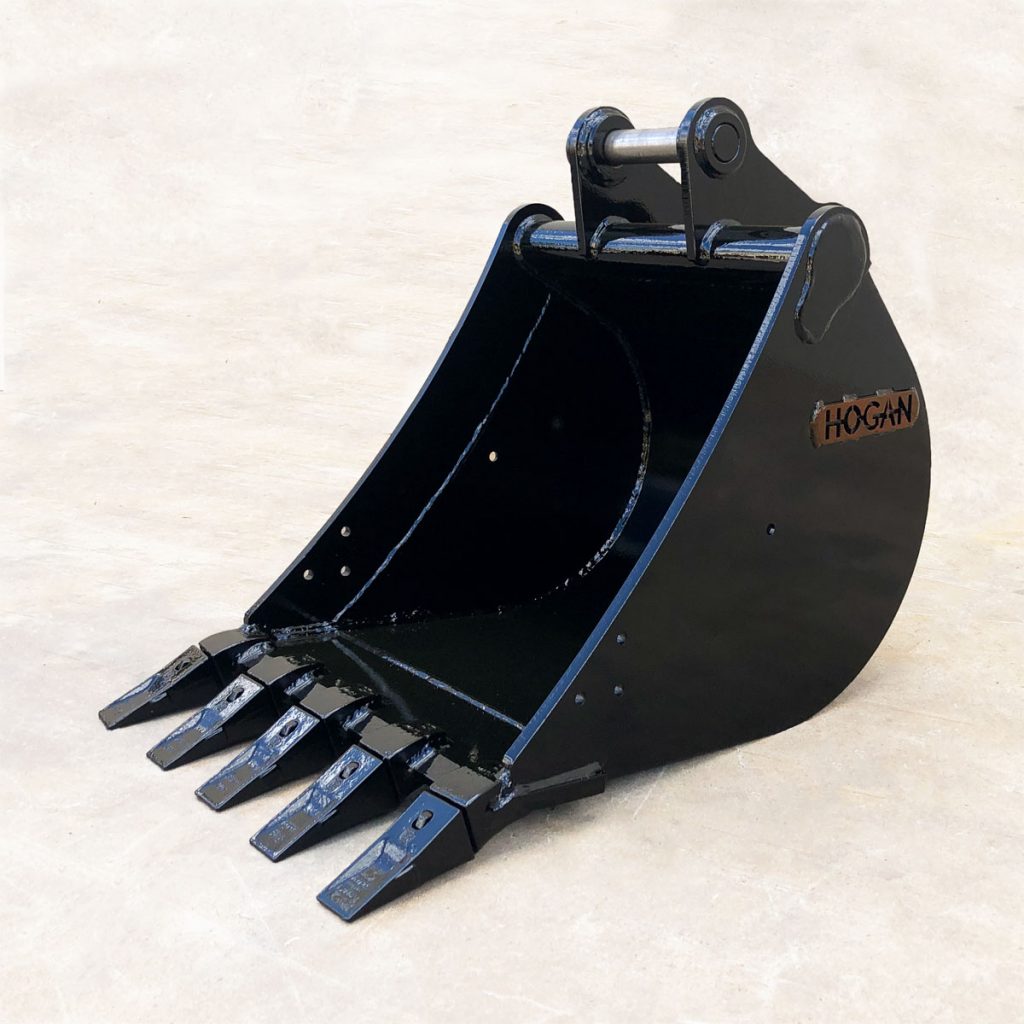Choosing the right bucket for your excavator is key in ensuring the productivity and efficiency of the machine and keeping your maintenance costs low. There are a few things you need to take into consideration when selecting the right bucket, such as:
- The size of your machine
- The type of work you intend to do
- Your budget

Bucket size
The size of bucket you can buy is often limited by the tonnage and specifications of your excavator. Larger widths and capacities are often only approved for use on larger machines as these same buckets on a smaller machine would make it unsafe to work with.
We can often think that “bigger is better” when it comes to buying buckets, but a bucket that is too big for your machine can actually reduce your excavator’s performance. Your machine may end up using excess fuel and power to penetrate the ground and move through material. It can also cause your machine to experience premature wear and tear, causing it to be unsafe and unreliable. All of this can lead you to unnecessary maintenance and repair costs that could have been avoided.
Nature of work
Different types of buckets are designed for different purposes. Using a bucket for the wrong purpose can cause the bucket to wear faster or cause your machine to use unnecessary fuel and power. It is important to choose a bucket that is designed to do the job you need it for in order to avoid this.

General purpose (GP) buckets, or digging buckets, are the most common kind of bucket you will see. The teeth on these buckets are designed to be able to penetrate a variety of materials, making them ideal for a wide range of general excavating jobs. GP buckets are also able to be customised with different types of teeth, removable side cutters and service blade adaptors, making them suitable for a majority of excavation work.
Mud buckets, or clean up buckets, are usually wider and have more capacity than GP buckets. They also have a flat cutting edge rather than teeth which makes them ideal for loading and moving around softer material. Using this kind of bucket to try and dig up hard or dense material will slow you down and use excess machine power.
Do your job well
Though it may take more time and money at first to be able to decide on the right bucket, forgetting to take these factors into account will end up costing you more in the long run. Choose wisely to ensure that your job is done well.
Hogan are an Australian manufacturer of a wide range of excavator attachments, and we are able to customise them to suit your specific job needs. Contact us now to discuss your next attachment purchase!
Still not sure what you should be purchasing? Give us a call on 1300 4 HOGAN and let our team give you obligation-free advice. We have decades of experience in the industry and are always happy to help you make the right choice.



